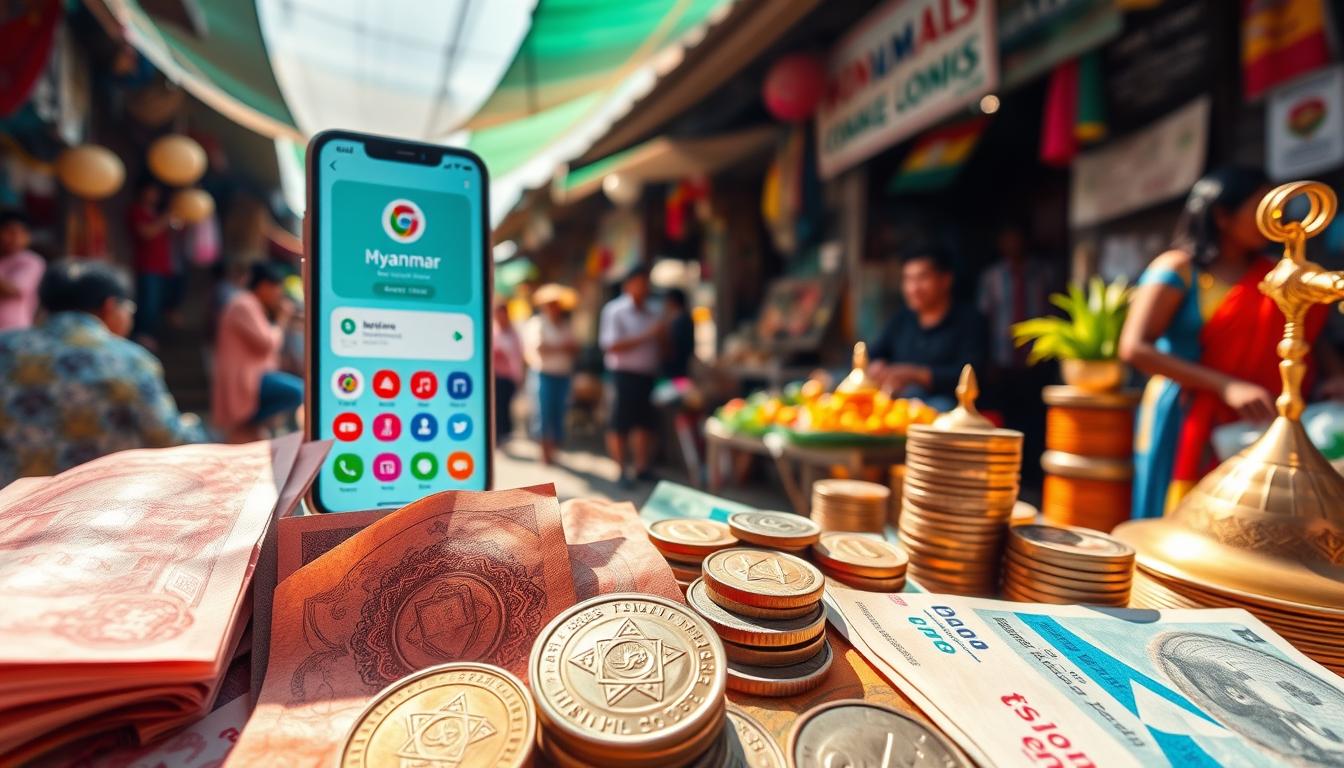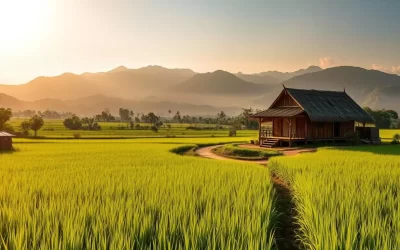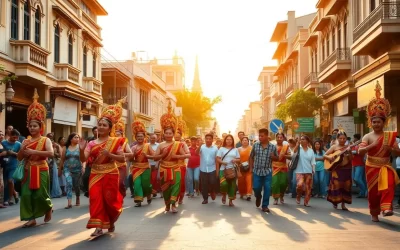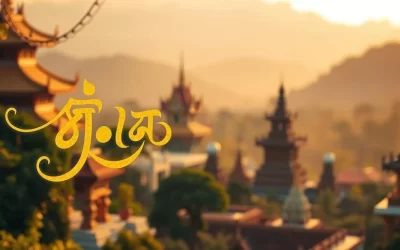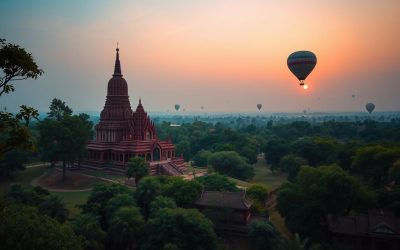Did you know that the number of ATMs in Myanmar skyrocketed from fewer than 100 in 2013 to over 1,000 by 2018? This rapid growth reflects the country’s evolving financial landscape, but navigating its currency system still requires some preparation.
The Kyat (MMK) is the official local currency, divided into 100 pyas. While notes are available in various denominations, smaller bills below K50 are rare. For travelers, carrying pristine USD is essential, as even minor creases or marks can lead to rejection by money exchangers.
Using a credit card can be challenging, as they are only accepted in top-end hotels in major cities like Yangon and Mandalay. ATMs dispense only Kyat, so having cash on hand is crucial for smooth transactions.
Understanding these details will help you manage your money effectively and enjoy a hassle-free experience. Let’s dive deeper into how to make the most of your financial planning for this fascinating destination.
Understanding Myanmar’s Currency Landscape
Navigating the currency system in this country requires a bit of preparation, especially for first-time visitors. The official currency, the Kyat, comes in various denominations, from K10,000 down to smaller notes like K50. However, notes below K50 are rarely seen in daily transactions.
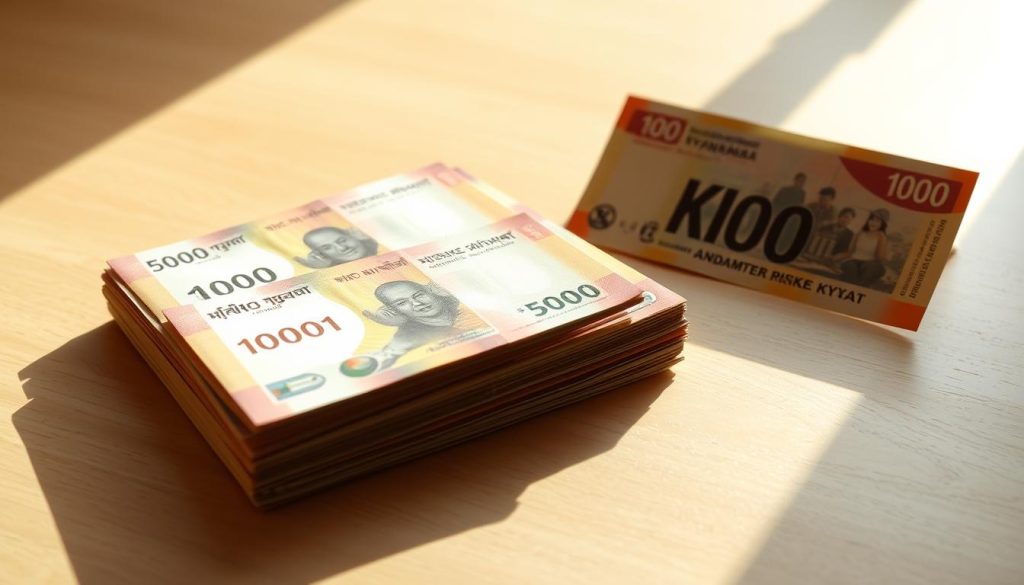
When paying for everyday expenses, larger notes like K5,000 and K10,000 are widely accepted. Smaller bills are useful for minor purchases, but it’s wise to carry a mix of denominations to avoid inconvenience. Keep in mind that pristine bills are preferred, as even minor creases can lead to rejection.
Kyat Denominations and Note Usage
The Kyat is divided into 100 pyas, though coins are rarely used. Notes are available in denominations of K5, K10, K20, K50, K100, K200, K1,000, K5,000, and K10,000. For travelers, carrying a combination of larger and smaller notes ensures smooth transactions in markets, restaurants, and transportation.
Traveler’s Currency Exchange Tips
Exchanging your dollars for Kyat is a common practice, but there are a few things to keep in mind. Always use crisp, unmarked bills, as even minor imperfections can lead to rejection. Banks in major cities like Yangon and Mandalay offer reliable exchange services, often requiring a valid passport for identification.
For the best exchange rate, avoid unofficial exchange places like night markets, which may carry risks of counterfeit money. Keep an eye on the rate fluctuations to maximize your dollar’s value. A small fee is typically charged for every $10 exchanged, which is often cheaper than ATM or credit card fees.
While cards are accepted in top-end hotels, cash remains the preferred method of payment in most areas. ATMs dispense only Kyat, so having enough local currency on hand is essential for a seamless travel experience.
International Payments and Banking Insights
Managing your finances while traveling internationally can be tricky, especially in countries with unique banking systems. Whether you’re withdrawing cash or exchanging currency, understanding the local financial landscape is key to a smooth trip.
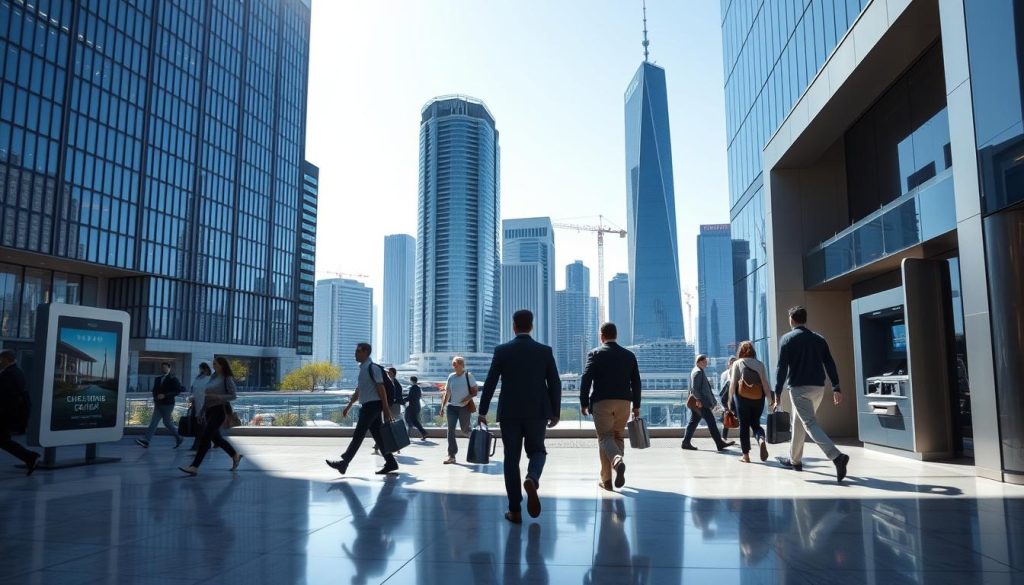
Using ATMs and Credit Cards
ATMs in major cities like Yangon and Mandalay accept foreign Mastercard and Visa cards. However, they dispense only the local currency, so plan accordingly. While ATMs are convenient, they can sometimes fail or run out of cash, leaving you stranded.
Credit cards are accepted in high-end hotels and some restaurants, but cash remains the preferred payment method. Always carry enough local currency for daily expenses, as relying solely on cards can lead to unexpected challenges.
Managing Foreign Currency Exchange
Exchanging your dollars for the local currency is a common practice, but it requires attention to detail. Use crisp, unmarked bills to avoid rejection, and exchange at reputable banks or authorized centers. Avoid unofficial exchange points, as they may offer unfavorable rates or counterfeit money.
Here’s a quick guide to help you navigate currency exchange:
| Exchange Method | Pros | Cons |
|---|---|---|
| Banks | Reliable, secure | May require a passport |
| Airport Kiosks | Convenient | Higher fees |
| Unofficial Exchanges | Quick | Risk of counterfeit money |
“Always carry a mix of cash and cards to ensure you’re prepared for any situation during your trip.”
By following these tips, you can manage your finances effectively and enjoy a hassle-free experience in your destination. Plan ahead, stay informed, and always have a backup way to access your money.
Myanmar: Ultimate Travelers Guide to Currencies & Payments
Planning your travel wallet is a key step to ensure a smooth journey. Carrying the right mix of cash and understanding how to use it can save you from unnecessary stress. Here’s how to organize your funds effectively for a hassle-free experience.
Carrying the Right Denominations
When preparing your wallet, aim for a mix of high and low denomination notes. Larger bills are useful for hotel stays or train tickets, while smaller notes are perfect for meals or bus fares. This ensures you’re ready for any payment scenario.
Timing Your Currency Exchange
Exchanging your money at the right time can make a big difference. Avoid last-minute exchanges at airports, as they often charge higher fees. Instead, visit reputable banks or authorized centers for better rates.
Managing Daily Expenses
Here are some practical tips to manage your cash effectively:
- Keep smaller notes for daily expenses like meals and bus rides.
- Carry crisp, unmarked bills to avoid rejection during transactions.
- Plan ahead for hotel bookings or train tickets, as these often require larger amounts.
“A well-prepared wallet ensures you’re ready for any situation, from street vendors to high-end hotels.”
By following these steps, you’ll be well-equipped to handle payments smoothly and enjoy your trip without financial worries.
Cultural Context and Smart Shopping in Myanmar
Exploring the vibrant markets of this region offers a unique glimpse into its rich cultural heritage. From lacquerware to rubies, the shopping experience here is deeply intertwined with local traditions. Whether you’re in a bustling city or a quiet area, understanding the cultural nuances can make your shopping more meaningful.
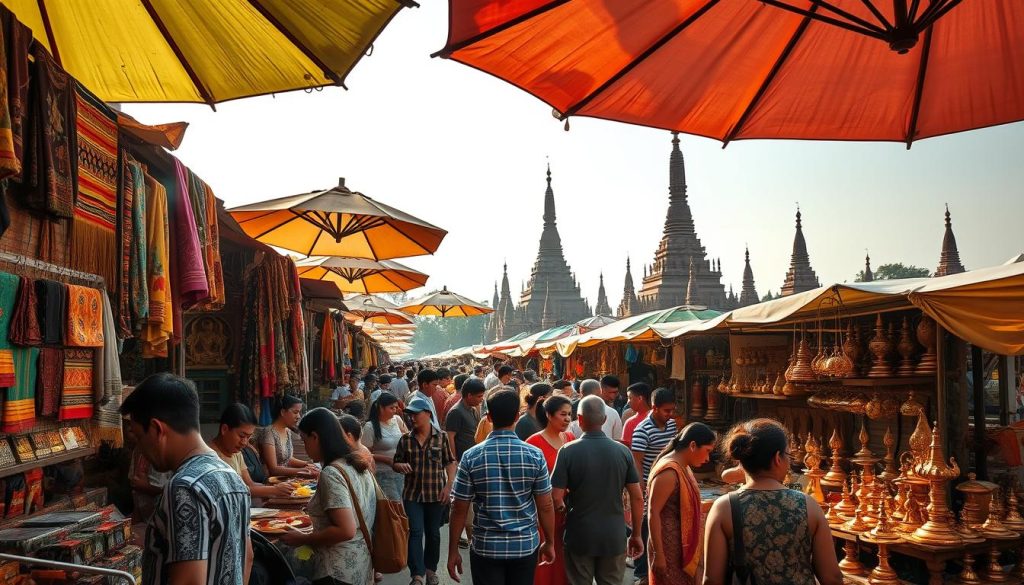
Souvenir Buying Dos and Don’ts
When buying souvenirs, it’s essential to know what to look for. Genuine lacquerware, for example, should have a smooth finish and vibrant colors. Avoid items with rough edges or faded designs, as these may be counterfeit. Similarly, when purchasing gemstones, always ask for a certificate of authenticity.
Here are some quick tips:
- Do visit reputable stores in popular tourist areas like Yangon or Mandalay.
- Don’t rush your purchase; take time to inspect the quality.
- Do engage with local artisans to learn about the craftsmanship.
- Don’t fall for overly cheap prices; they often indicate fake products.
Identifying Authentic Local Products
Spotting authentic items requires a keen eye. For lacquerware, look for intricate designs and a glossy finish. Rubies should have a deep red hue and clarity. Handicrafts like embroidered tapestries often feature traditional patterns unique to the place.
Here’s a comparison of shopping methods:
| Method | Pros | Cons |
|---|---|---|
| Local Markets | Authentic, cultural experience | May require negotiation |
| Reputable Stores | Guaranteed authenticity | Higher prices |
| Guided Tour | Expert insights, convenience | Less flexibility |
“Shopping here is not just about buying; it’s about connecting with the culture and its people.”
By following these tips, you can shop with confidence and bring home meaningful souvenirs that reflect the region’s rich heritage.
Navigating Transportation, Health, and Safety in Myanmar
Getting around efficiently is key to enjoying your trip to its fullest. Whether you’re exploring bustling cities or quiet rural areas, understanding local transportation options ensures a smooth journey. From buses and taxis to ride-sharing apps like Grab, there are plenty of ways to move around. However, connectivity can sometimes be a challenge, especially in remote regions.
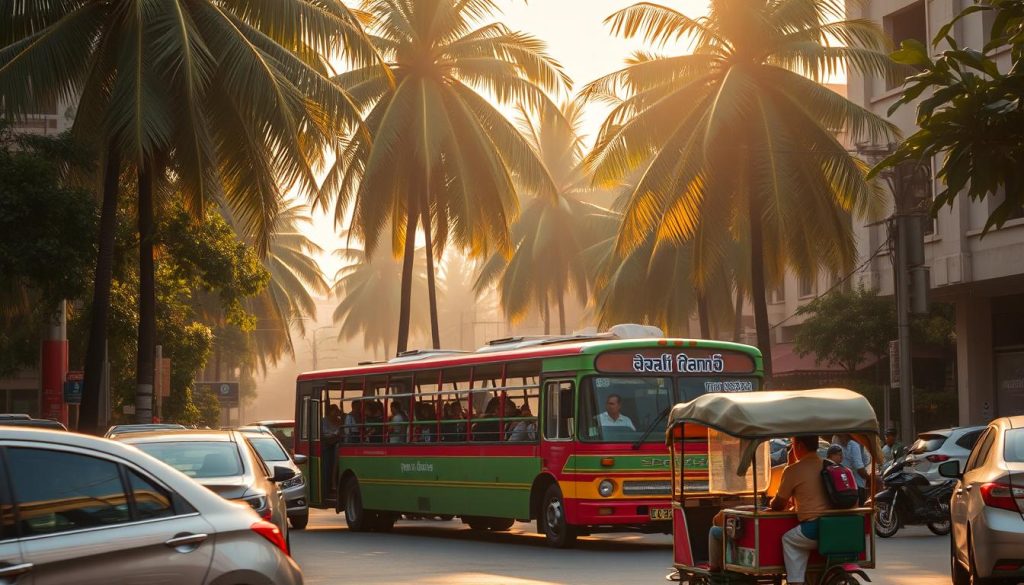
Local Transport and Connectivity Tips
Public buses are a budget-friendly option, but they can be crowded. Taxis are more comfortable, though negotiating fares is common. For convenience, Grab is widely used in cities like Yangon. It’s a reliable way to navigate street traffic and get the best value for your money.
When traveling long distances, domestic flights are efficient but come with baggage limits. Trains and buses are alternatives, though comfort levels vary. Always plan ahead, especially if you’re heading to areas with limited connectivity.
Health and Safety Precautions
Staying healthy during your trip is crucial. Carry personal medicines, as local pharmacies may not have what you need. Stick to bottled or boiled water to avoid health issues. When eating out, choose reputable establishments to ensure your food is safe.
Here are some quick tips for a safe journey:
- Always carry a small first-aid kit.
- Avoid drinking tap water; opt for sealed bottles.
- Be cautious when crossing busy streets, especially in cities.
Finding Reliable Banks and ATMs
Accessing cash is essential for daily expenses. While ATMs are available in cities, they may be scarce in rural areas. Major banks like CB Bank and KBZ Bank offer reliable services. Always carry some cash, as cards are not widely accepted outside major hotels and shops.
| Transport Option | Pros | Cons |
|---|---|---|
| Buses | Budget-friendly | Crowded, limited routes |
| Taxis | Comfortable, flexible | Fare negotiation required |
| Grab | Convenient, reliable | Limited to urban areas |
“A well-planned journey ensures you can focus on enjoying the experience, not worrying about logistics.”
By following these tips, you’ll be well-prepared to navigate transportation, stay healthy, and manage your finances during your trip. Whether you’re shopping for necessities or exploring new areas, these insights will help you make the most of your adventure.
Practical Travel Tips for a Seamless Experience
Planning your trip to this culturally rich destination requires attention to detail and a few essential tips. From understanding local customs to managing your time effectively, these insights will help you make the most of your journey.
Essential Pre-Travel Preparations
Start by creating a checklist to ensure you’re fully prepared. Allocate time for key attractions like pagodas, where you might spend an hour or more exploring. Pack essentials like comfortable shoes, sunscreen, and a reusable water bottle.
When hiring a guide, confirm their fee upfront to avoid misunderstandings. Many guides offer valuable insights into local history and culture, making them worth the investment. If you’re traveling with a group, ensure each person knows the itinerary to stay on schedule.
Useful Local Etiquette Guidelines
Respect for local customs is key to a positive experience. When visiting religious sites like pagodas, dress modestly and remove your shoes before entering. Tipping is appreciated but not mandatory; a small fee for services like guiding or transportation is a kind gesture.
Here are some quick tips to keep in mind:
- Always greet locals with a smile and a polite nod.
- Ask permission before taking photos of persons or sacred sites.
- Be mindful of your tone and body language to show respect.
“Understanding and respecting local customs can transform your trip into a meaningful cultural exchange.”
By following these practical tips, you’ll be well-prepared to navigate your journey with ease and confidence. Whether you’re exploring ancient pagodas or interacting with locals, these guidelines will help you create lasting memories.
Conclusion
Preparing for your holiday involves more than just packing your bags. Managing your money wisely ensures a smooth and enjoyable experience. Always carry a mix of cash and cards, especially for shopping and food expenses. Crisp bills are preferred for exchanges, and planning ahead can save you from last-minute hassles.
When buying tickets or exploring local markets, understanding the exchange environment is crucial. Keep an eye on rates to maximize your euro or dollar value. Safety and cultural awareness are equally important, so respect local customs and stay informed about your surroundings.
By following these tips, every traveler can feel well-equipped for their journey. Whether you’re savoring local cuisine or finding the perfect souvenir, careful preparation ensures a memorable holiday. Enjoy your adventure with confidence and ease!
The above is subject to change.
Check back often to TRAVEL.COM for the latest travel tips and deals.
Here are some Tours & Sightseeing suggestions that might pique your interests!
